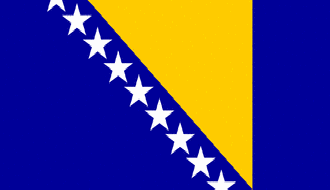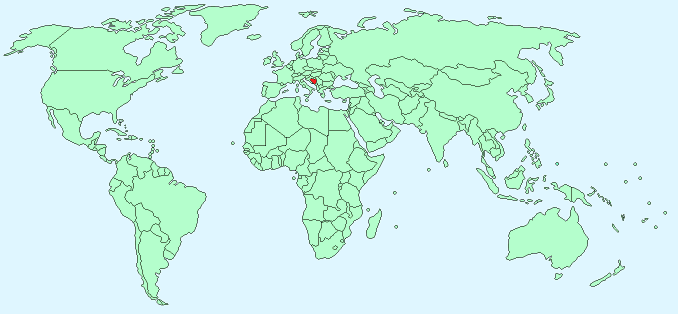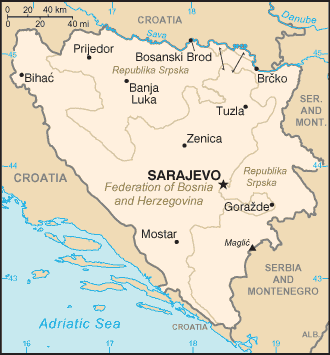Bosnia and Herzegovina


Continent – Europe
Region – Central Europe, non EU member
Size – 51,129 km²
Geography – Mountains and valleys
Language – Bosnian, Croatian, Serbian
Religion – 40% Muslim, 31% Orthodox, 15% Roman Catholic, 14% other
Monetary Unit – Convertible Mark
Natural Resources – coal, iron ore, bauxite, copper, lead, zinc, chromite, cobalt, manganese, nickel, clay, gypsum, salt, sand
Agriculture – wheat, corn, fruits, vegetables; livestock
Industry – steel, coal, iron ore, lead, zinc, manganese, bauxite, vehicle assembly, textiles, tobacco products, wooden furniture, tank and aircraft assembly, domestic appliances, oil refining

Neighbouring Countries – Croatia, Serbia, Montenegro
Population – 3,871,643 (2014)
Population Growth Rate – 1.00%
Average Life Expectancy – 78.17
Capital City – Sarajevo (population 369,534)
Highest Mountain – Maglic (2,386m)
Longest River – Bosna (271 km)
Climate – Warm summers 13°C to 27°C and cold winters -3°C to 10°C
Yearly Rainfall – 95cm approx
Plant Life – ferns, flowers, mosses, and common trees
Animal Life – deer, brown bears, rabbits, fox, and wild boars
Harvard Reference for this page:
Heather Y Wheeler. (2015). Bosnia and Herzegovina. Available: https://www.naturalhistoryonthenet.com/Facts_Figures/Country_Facts/bosniaherzegovina.htm. Last accessed Monday, July 18, 2016
Facts and Figures Pages
